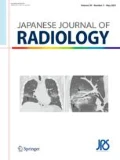Our study was conducted from January 10th to February 8th, 2020 when China was in severe outbreak. At that time, either doctors or scientists knew little about COVID-19, testing capacity was limited and false-negative results existed. That is why we mentioned “we suggested CT and epidemiological history as the primary clues and clinical symptoms and routine laboratory tests as the secondary clues for the early clinical diagnosis of suspicious patients to implement isolation and then wait for the nucleic acid results” [1]. A basic premise was that CT results could be known within 1 h; however, RT-PCR results were reported after 12–48 h at that time. Because we need to send the sample to CDC and do the experiments. CT results could be a faster measure to identify suspected cases.
We agree with the Farfour’s comments that “Using such a strategy could, therefore, encourage to stop infection prevention and control (IPC) measure before the RT-PCR result was obtained” [2]. Nowadays, the testing capacity has dramatically increased and lots of clinical nucleic acid testing laboratories have been established, which reduced the turn-around time.
As mentioned in our article, some patients such as Cases 21 and 22 [1] were found to be negative results for RT-PCR, while their CT showed pulmonary lesions. Figure 5 of Case 22 showed that “a small patchy GGO shadow and small patchy consolidation in the subpleural area of both lungs. The boundary is unclear, and the capillaries increase.” COVID-19 started from the periphery of the lung lobe and originated in centrilobular or subpleural regions [3, 4]. In the early stage, GGO was the main manifestation, and interlobular septal thickening and intralobular lines gradually appeared, showing reticular shadow changes in the ground glass shadow. We did not find gravity distribution, tree-bud pattern, cavity, or cystic airspaces in the CT images. The central interstitium is rarely affected except in serious patients. In addition, COVID-19 patients were not found to have combined infections with bacteria and fungi in our studies and other studies. These CT findings were uncommon in other viral pneumonia.
Farfour et al. introduced the previous study on the early stage diagnostic value of chest CT by Pan F’s et al. and described that chest CT displayed high specificity but low sensitivity mainly in patients presenting within the first four days of the disease [5]. However, we thought if lesion was found on CT, early isolation was the first emergency for respiratory infectious diseases. We never deny the dominant position of RT-PCR in the diagnosis of COVID-19. During the pandemic, due to the turn-around time before the results of RT-PCR, if lesions were found from the immediate CT scan, isolation and treatment should be taken immediately, no matter it was COVID-19 or suspected cases. In addition, RT-PCR may have false-negative results due to various reasons, while the changes of CT did reflect the clinical conditions of diseases of patients. Each testing no matter RT PCR, CT and serological tests have their pros and cons. As Song et al. mention that “Although the positive nucleic acid testing is the diagnostic reference standard, patients with fever and/or cough and with GGO-prominent lesions in the peripheral and posterior part of lungs on CT images, combined with normal or decreased white blood cells and a history of epidemic exposure, should be highly suspected of having 2019-nCoV pneumonia” [6]. In summary, we suggest to combine the comprehensive consideration before diagnosis and treatment.
References
Duan X, Guo X, Qiang J. A retrospective study of the initial 25 COVID-19 patients in Luoyang China. Jpn J Radiol. 2020;38(7):683–90. https://doi.org/10.1007/s11604-020-00988-4.
Farfour E, Mellot F, Lesprit P, Vasse M, SARS-CoV-2 Foch hospital study group. SARS-CoV-2 RT-PCR and Chest CT, two complementary approaches for COVID-19 diagnosis. Jpn J Radiol. 2020. https://doi.org/10.1007/s11604-020-01016-1.
Xie X, Zhong Z, Zhao W, Zheng C, Wang F, Liu J. Chest CT for typical 2019-nCoV pneumonia: relationship to negative RT-PCR testing. Radiology. 2020;296(2):E41–5. https://doi.org/10.1148/radiol.2020200343.
Fang Y, Zhang H, Xie J, Lin M, Ying L, Pang P, Ji W. Sensitivity of chest CT for COVID-19: comparison to RT-PCR. Radiology. 2020. https://doi.org/10.1148/radiol.2020200432.
Farfour E, Mellot F, Lesprit P, Vasse M, The SARS-CoV-2 Foch hospital study group. SARS-CoV-2 RT-PCR and 3Chest CT, two complementary approaches for COVID-19 diagnosis. Jpn J Radiol. 2020. https://doi.org/10.1007/s11604-020-01016-1.
Song F, Shi N, Shan F, Zhang Z, Shen J, Lu H, et al. Emerging 2019 novel coronavirus (2019-nCoV) pneumonia. Radiology. 2020;95(1):210–7. https://doi.org/10.1148/radiol.2020200274.
Author information
Authors and Affiliations
Corresponding author
Ethics declarations
Conflict of interest
The authors declare that they have no conflict of interest.
Ethical approval
All procedures performed in studies involving human participants were in accordance with the ethical standards of The First Affiliated Hospital, College of Clinical Medicine, Medical College of Henan University of Science and Technology and with the 1964 Helsinki declaration and its later amendments or comparable ethical standards.
Informed consent
Informed consent was obtained from all individual participants included in the study.
Additional information
Publisher's Note
Springer Nature remains neutral with regard to jurisdictional claims in published maps and institutional affiliations.
About this article
Cite this article
Duan, X., Guo, X. & Qiang, J. Reply to “A SARS-CoV-2 RT-PCR and Chest CT, two complementary approaches for COVID-19 diagnosis”. Jpn J Radiol 38, 1211–1212 (2020). https://doi.org/10.1007/s11604-020-01046-9
Received:
Accepted:
Published:
Issue Date:
DOI: https://doi.org/10.1007/s11604-020-01046-9

